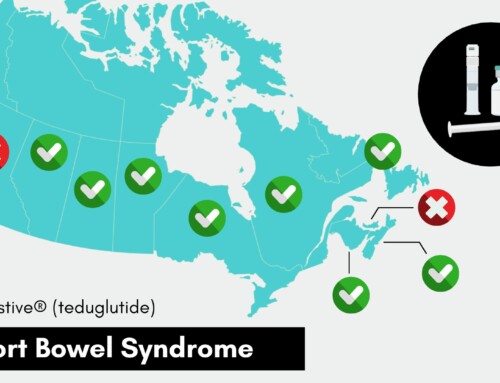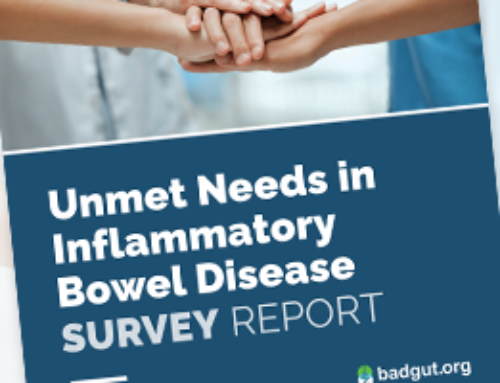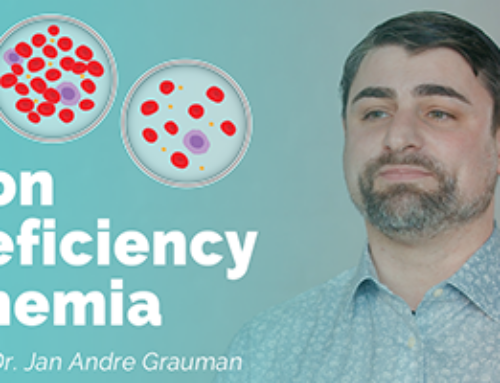Iron Deficiency Anemia Animated Video
Video Transcript
Iron deficiency anemia. Anemia occurs when a person does not have enough healthy red blood cells to carry oxygen to the rest of the cells in their body. Since iron is a vital component of red blood cells, individuals who have low iron levels can develop iron deficiency anemia, or IDA.
Iron deficiency can result from a wide range of causes, the most common of which is inadequate dietary intake, often combined with some level of blood loss. This is especially common in women, due to menstruation and childbirth, as well as in people who have diseases that cause bleeding, including inflammatory bowel disease, hemorrhoids, gastritis, and recurrent nose bleeds. Malabsorption can also contribute to IDA in individuals living with digestive diseases, such as celiac disease, Crohn’s disease, and ulcerative colitis, and those who have any other conditions that affect the body’s ability to absorb nutrients from food.
The symptoms of IDA are often vague, general, and present in different ways. The most common of these are fatigue and tiredness. Other symptoms include feeling short of breath, weakness, dizziness, headaches, sore tongue, pale skin, chest pain, fast heartbeat, cold hands and feet, brittle nails, restless legs syndrome, depression, and decreased appetite.
If left untreated, infants and children with iron deficiency anemia can have permanently delayed growth and development.
However, the good news is that IDA is easy to diagnose and has many treatment options.
Diagnosis typically begins with a physician assessing an individual’s symptoms and then ordering blood tests. These include tests to determine iron stores and the amount and quality of red blood cells. Physicians might also run some more tests to determine the cause. For example, they might order stool samples or endoscopy to check for bleeding in the digestive tract.
To treat iron deficiency anemia, there are a few options, including eating more iron-rich foods, taking oral iron supplements, or receiving iron through injection or intravenous infusion.
Heme iron, which is in meat-based foods, is more readily absorbed. Plant foods contain non-heme iron, which is more difficult to absorb, but still an important source. Eating foods high in vitamin C along with non-heme iron can increase absorption. Registered dietitians can help people find iron rich foods that integrate with their nutritional needs, flavour preferences, and cultural dishes.
However, most people with diagnosed iron deficiency anemia require iron supplements to thoroughly replenish their stores.
Oral iron supplements include iron salts, which are older formulations that can have many side effects. Some side effects include stomach upset, dark stools, constipation, and in the case of liquid iron products, teeth staining. Like with food sources, combining oral iron supplements with vitamin C can increase absorption. Taking the supplements every other day can also be helpful at ensuring adequate absorption while reducing side effects.
Intravenous, or IV, iron is an efficient way to quickly increase iron levels, which is ideal for those who are under time constraints, unable to absorb oral iron, or have severe side effects from oral iron. Healthcare professionals administer iron infusions in a hospital outpatient clinic or at a private infusion clinic. They are generally safe, but there are rare, infusion-related side effects, including low blood pressure and mild aches and pains. There is also a very rare chance of experiencing a severe allergic reaction or a pseudo-allergic reaction.
While it can sometimes be difficult to treat the underlying cause, there are many ways to manage the iron deficiency anemia itself, which can improve symptoms and quality of life. Ongoing research into new agents that are easier to tolerate and more convenient will continue to make treatment quicker and more comfortable.
Want to learn more about iron deficiency anemia?
We have several related articles that may be helpful:






